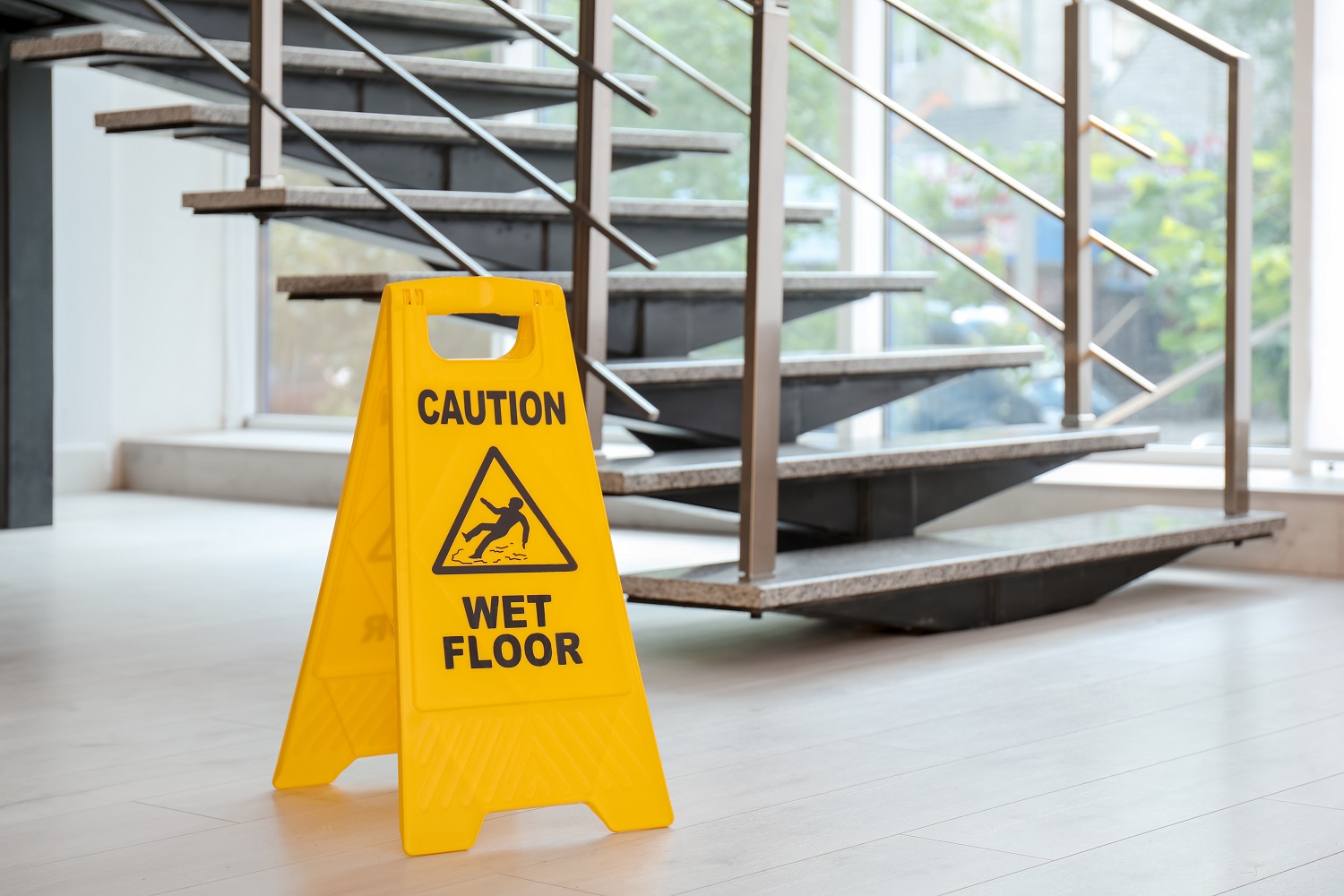In Australia, falls, trips, and slips cause a significant number of accidents every year, making it necessary to have clear safety requirements outlined when it comes to supplying flooring surfaces.
How Is Slip Resistance Assessed and Regulated?
The Building Code of Australia states that paths of travel in new commercial buildings shall provide a slip-resistant surface.
To assess the slip resistance of new surfaces, evaluators reference AS4586 — the most current National Association of Testing Authorities (NATA) approved slip resistance rating -– and the associated handbook: HB 198 – An introductory guide to the slip resistance of pedestrian surface materials.
How Is Slip Resistance Classified?
Since there are numerous factors that can affect a surface, slip resistance can be difficult to evaluate. In order to achieve accurate results, slip resistance ratings require controlled testing environments, a standard rating, proper evaluation, and clear testing methods.
Current slip resistance testing throughout Australia can be broadly classified into two groups: the testing of new pedestrian surfaces and of existing pedestrian surfaces. Slip resistance testing of new pedestrian surfaces is completed in accordance with AS 4586. Slip resistance testing of existing pedestrian surfaces is done according to AS 4663.
When evaluating the slip resistance of new pedestrian surfaces, two major classifications — wet conditions and dry conditions — of slip resistance test methods are utilised.
When measuring the slip resistance of dry surfaces, a floor friction tester is utilised. Wet surfaces are tested using an Oil Wet Ramp, Wet Barefoot Ramp, or Wet Pendulum Test.
With reference to guidelines from AS4586, the slip resistance of new products can be classified using four methods of testing:
1. Wet Pendulum Slip Resistance Test (Appendix A of AS4586)
The test equipment for wet pendulum slip resistance consists of a swinging pendulum featuring a spring-loaded rubber foot.
When passing through the vertical position, the rubber foot on the pendulum slides across the wet testing surface. The resistance is recorded as a Slip Resistance Value (SRV) and then classified according to AS 4586.
2. Dry Floor Friction Slip Resistance Test (Appendix B of AS4586)
The dry test involves a battery-operated machine with a rubber slider. At a constant speed, the opposing force on the slider gets measured. The results of two tests are then averaged together to determine the Coefficient of Friction (CoF). Essentially, this refers to the ratio of horizontal to vertical force.
3. Wet Barefoot Inclining Platform Slip-resistance (Appendix C of AS4586)
In this test method, samples of a suitable size are attached to an inclining platform surface. Two people then soften their feet in water for 10 minutes before walking on the wetted inclining platform in a safety harness.
The angle of the inclining platform is raised to the point that the test individuals feel that walking will cause slipping. Using data from the two testers, a safe walking limit — known as the mean angle of inclination — is established.
4. Oil Wet Inclining Platform Slip-resistance (Appendix D of AS4586)
Designed specifically for testing highly profiled industrial surfaces, the Oil Wet Inclining Platform Slip-resistance test uses similar equipment to the wet barefoot inclining platform slip resistance test. However, for the Oil Wet Test, oil is used instead of water as the wetting agent and testers wear safety boots.
Test results are then categorised into five classes ranging from the shallowest angle to the steepest.
It is important to note that the Wet Pendulum and Dry Floor Friction Test can be performed on-site whereas the other two tests must be performed in a controlled site.
This makes the wet pendulum test the preferred method for the evaluation of public surfaces that are more likely to be affected by water and where individuals will be wearing shoes with soles.
What Are the Different Categories of Slip Ratings?
Slip ratings can be categorised into the following:
- A, B, and C ratings are for the wet barefoot ramp test
- D ratings are for the dry floor friction test
- P ratings are for the wet pendulum slip test
- R ratings are for the oil wet ramp test
Each slip rating is used to evaluate the frictional characteristics of a specific surface in varying environmental conditions. The slip rating which best represents the actual working conditions of the surface should be used.
For example, a dry floor slip rating should not be used with environments with oil contamination. Rather, these instances require oil wet ramp slip ratings, or R ratings.
Monitoring Slip Resistance Ratings
Slip resistance is generally highest when a flooring surface is new and quickly reduces before it plateaus. Areas with higher traffic see a reduction in slip resistance faster than areas of lower traffic.

Office flooring in well trafficked areas needs to undergo ongoing slip rating assessment.
For these reasons, it is important to continue ongoing slip rating assessment, with a specific focus on where ongoing testing takes place. AS4663 outlines the testing procedures to measure the slip resistant properties of existing floor surfaces using the same procedures as new floors, but different classification criteria.
Additional considerations such as the amount and type of traffic are also important to factor in testing methods. These considerations may include cleaning methods and practices, along with other safety and occupational health aspects such as appropriate signs and handrails.
By slip testing proposed surface finishes and new floors on construction sites, the risk of slips and falls is significantly reduced in commercial flooring applications.
Have Further Questions?
If you are researching new flooring for your home, business or office, please contact us if you have any questions regarding slip resistance ratings. We can answer any questions you have, explain the different slip ratings of the floors we offer, and help you decide on the appropriate flooring surface for your commercial setting. If you’re looking for anti-slip flooring, you can check out our slip resistant flooring range.
We know this topic may seem overwhelming at first, but we are here to break it down for you step by step if needed.



